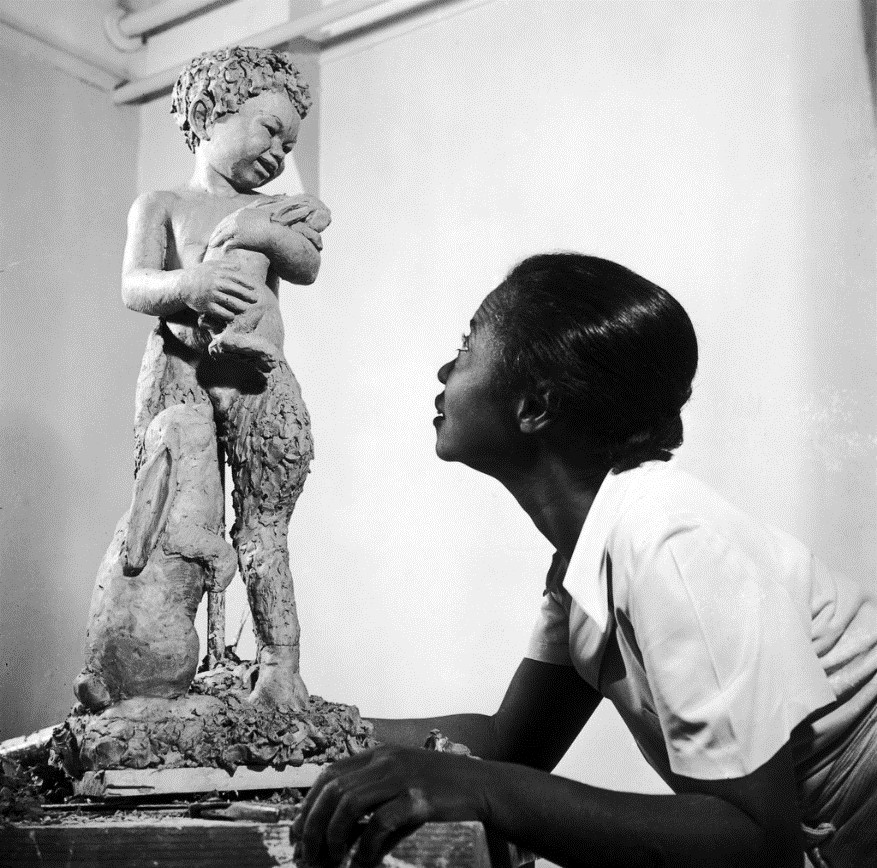By Millie Wright
We are at a crux in history where conventions are being challenged and expanded. After years of racial and gendered struggle, black women are beginning to gain appreciation for their artistic talent and discriminatory struggles they have overcome to achieve these, that history had attempted to conceal.
Of these women was Augusta Savage (1892-1962), painted as ‘one of America’s most influential 20th-century artists’, whose work consisted of a diversity

Augusta Savage working on a piece, New York, NY, 1938. Source: Hansel Mieth/The LIFE Picture Collection/Getty Images
of striking sculptures. She is celebrated not only for her exceptional artistic contributions but also her lifelong advocacy for African- American’s equality within the Arts.
Savage was at the heart of the 20th century Harlem Renaissance, remembered as the ‘golden age’ of black art, music and literature.
The movement began due to the formation of a creativity hub of African American artists in liberal Harlem, New York, after their ‘Great Migration’ from repressive southern states.
Through her art and activism, Savage became an influential teacher to younger African-Americans and played a great role in shaping the careers of many of the Renaissance’s most prominent artists. Her creation of the multi-cultural establishment, ‘Savage Studio of Arts and Crafts’ in 1931 later renamed as the ‘Harlem Community Art Center’, in 1932, was fundamental to the Harlem Renaissance’s artistic advancements and would foster the development of 1,500 students.
For the remainder of her life, she continued to create groundbreaking work, such as her sculpture of a child from Harlem, Gamin, (1929) but what reinforced her greatest legacy and true masterpiece was the impression she left on her students.
A key impact, and one of many that the movement brought, was that Black artists have gained increased control over representations of Black culture and experience, which helped to later set the stage for the Civil Rights Movement.

I’ve always loved this picture, but have never seen what became of the sculpture? I’d love to know.